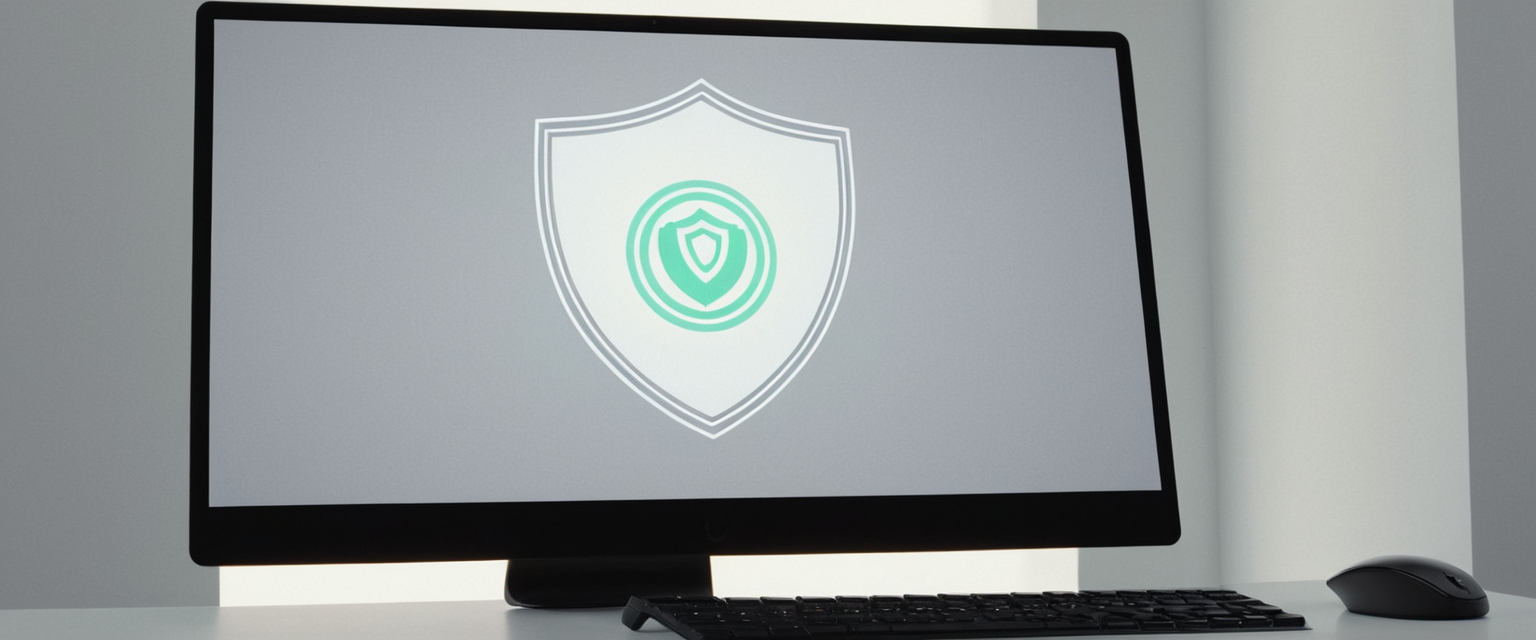
This report provides an exhaustive examination of the procedures, challenges, and considerations involved in disabling McAfee antivirus software across multiple platforms and operating systems. Users may need to disable antivirus protection for legitimate reasons such as installing software that conflicts with real-time scanning, troubleshooting system performance issues, or transitioning to alternative security solutions. This analysis covers both temporary disabling of specific protection features and permanent uninstallation of the software, while emphasizing important security considerations that accompany these actions. The report explores the technical mechanisms behind McAfee’s various security components, detailed step-by-step procedures for different versions and platforms, common obstacles users encounter during the disabling process, and best practices for maintaining device security during periods of reduced antivirus protection.
Understanding McAfee Antivirus Software Architecture and Components
McAfee antivirus software has evolved into a comprehensive security suite that extends far beyond simple virus detection and removal. The software architecture incorporates multiple protective layers, each designed to intercept threats at different stages of potential compromise. The most critical component is real-time scanning, which continuously monitors files, programs, and network activity as they occur on the system. This feature operates in the background and examines every file accessed or executed, providing immediate protection against known and emerging threats. Another fundamental component is the firewall, which controls incoming and outgoing network connections based on predetermined security rules. The firewall prevents unauthorized access to the system while allowing legitimate network communication necessary for normal operations.
Beyond these primary protective mechanisms, McAfee offers several supplementary features that enhance overall security posture. Scheduled scanning performs comprehensive system checks on a predetermined schedule, typically once per week by default, to identify any threats that may have escaped real-time detection. Automatic updates ensure that the antivirus definitions remain current with the latest threat intelligence, allowing the software to recognize newly discovered malware variants. WebAdvisor functions as a browser extension that protects users from malicious websites and phishing attempts during web browsing. Tracker Remover maintains user privacy by identifying and eliminating cookies and tracking technologies that follow user activity across the internet. Understanding this multi-layered architecture is essential because disabling McAfee completely or selectively requires knowledge of which component to disable based on the user’s specific objectives.
McAfee offers several product variants targeting different user needs, including McAfee Security Center, McAfee Total Protection, McAfee LiveSafe, and McAfee VirusScan Enterprise. Each product maintains similar core functionality but may vary in user interface design, available features, and management capabilities. Security Center represents a basic offering for fundamental antivirus protection, while Total Protection and LiveSafe include expanded features such as password managers, VPN services, and identity theft protection. VirusScan Enterprise is specifically designed for corporate environments and may integrate with centralized management systems. Understanding which specific McAfee product is installed on a system proves important because the procedures for disabling protection may differ slightly between versions, though the underlying principles remain consistent across most variants.
Temporary Disabling of McAfee Protection on Windows Systems
Disabling Real-Time Scanning on Windows
The most commonly needed procedure for Windows users involves temporarily disabling real-time scanning without completely removing the software from the system. This approach proves useful when installing software that genuine antivirus software might incorrectly flag as malicious, or when troubleshooting system performance problems potentially caused by constant file monitoring. The process begins by launching the McAfee application on the Windows system. Users can access the application by searching for “McAfee” in the Windows search box and clicking on the McAfee Personal Security or McAfee Total Protection option that appears in the results. Once the McAfee interface opens, users should locate the navigation menu, typically found on the left side of the window and accessible by clicking three horizontal lines or a menu icon.
After accessing the main menu, users should navigate to the protection settings section, often labeled as “My Protection” or “PC Security”. Within this section, users will find a list of active protective features, with real-time scanning typically appearing as the primary or second option in the list. Clicking on the real-time scanning option reveals its current status and provides access to the disabling mechanism. Users should then locate and click the “Turn Off” button displayed within the real-time scanning panel. Upon clicking the turn-off button, the McAfee application will typically prompt the user with a dialog asking when they want real-time scanning to resume. This timing selection offers crucial flexibility, allowing users to choose between several predefined intervals including fifteen minutes, thirty minutes, forty-five minutes, sixty minutes, at the next system restart, or never.
The “never” option proves particularly important for users seeking permanent disabling, as selecting this option means real-time scanning will not automatically reactivate until the user manually re-enables it. However, the temporary options allow users to maintain security by ensuring protection eventually restarts automatically. After selecting the desired timing option, users must click the “Turn Off” button again to confirm their choice and finalize the disabling process. Once complete, the McAfee interface will display confirmation that real-time scanning has been successfully disabled, and Windows may display a notification from Windows Security indicating that virus protection is no longer active, which is a normal and expected behavior. Users should note that turning off real-time scanning leaves the computer vulnerable to threats during the disabled period, and McAfee recommends re-enabling this protection as soon as the task requiring its disabling is completed.
Disabling the McAfee Firewall on Windows
The McAfee firewall component can be disabled independently of real-time scanning, providing users with the flexibility to disable specific protection features based on their needs. The disabling process for the firewall follows a similar procedure to that used for real-time scanning. Users should first open the McAfee application and navigate to the protection settings menu. Within the settings menu, users should locate the firewall option, which typically appears below or near the real-time scanning setting. Clicking on the firewall option opens the firewall status window where users can view the current protection status and access controls for managing the firewall.
Similar to the real-time scanning process, users will find a “Turn Off” button or similar control within the firewall settings window. Clicking this button initiates the disabling process and presents users with options for specifying when firewall protection should resume. Users should select their preferred timing option from the dropdown menu, which typically includes the same duration choices available for real-time scanning. After selecting the desired timing option, users must click “Turn Off Firewall” or similar confirmation button to complete the disabling process. The firewall will then be deactivated, allowing network traffic that would normally be blocked by the firewall to pass through, which may be necessary when troubleshooting network connectivity issues or configuring new network applications that the firewall was previously blocking.
Managing Scheduled Scans on Windows
Beyond real-time scanning and firewall protection, users may also need to temporarily disable scheduled scans that run automatically according to a predetermined schedule. Turning off scheduled scanning prevents the system from conducting the periodic comprehensive checks that McAfee performs by default once weekly. To disable scheduled scanning, users should access the McAfee application and navigate to the protection settings menu as described previously. Within the settings, users should look for an option related to scheduled scans or automatic scanning, which may be located within the same protection menu or under a separate maintenance or settings section. Once located, users should select the option to disable scheduled scanning or turn it off using the available controls.
McAfee recommends that users re-enable scheduled scanning as soon as possible, as turning off scheduled scanning can leave the computer exposed to threats that escaped real-time detection. The default schedule of once weekly scanning represents a reasonable balance between security and system resource usage, and users are generally advised to maintain this protection unless specific circumstances require temporary disabling.
Disabling McAfee Protection on macOS Systems
Disabling Real-Time Scanning on Mac
Mac users can disable McAfee protection through a somewhat different interface that leverages macOS-specific design patterns. To begin the disabling process, Mac users should locate the McAfee icon in the menu bar at the top-right corner of the screen, typically appearing as a white and red shield logo. If the icon is not visible in the menu bar, users can click the magnifying glass (Spotlight search) icon at the top-right corner, type “McAfee” into the search box, and select the appropriate McAfee application from the search results. After locating the McAfee icon in the menu bar, users should click on it to open a dropdown menu or access the McAfee interface.
From the McAfee menu or main interface window, users should look for a “Total Protection Console” or similar main application window that displays overall protection status. Upon accessing the main console, users should locate and click on the “Home” tab or similar section that displays the overall status of protection features. Within the Home tab, users should look for a gear icon or settings button that provides access to detailed protection settings. Clicking on this gear icon reveals options for managing specific protection features, with real-time scanning typically appearing as the first or primary option. To disable real-time scanning on Mac, users must first click the lock icon that appears near the real-time scanning setting. This lock icon prevents accidental changes to critical security settings and requires the user to enter their administrator password to unlock the settings for modification.
After entering the administrator password and clicking “OK”, the lock icon should change appearance to indicate that the settings are now unlocked. Users can then click on the real-time scanning toggle switch or button to disable real-time scanning. Some versions of McAfee on Mac may display the option differently, but the fundamental process of unlocking the settings with administrator credentials and then clicking to disable remains consistent across versions. Upon successful disabling, the interface should display confirmation that real-time scanning is no longer active, with the toggle switch typically changing appearance to reflect the disabled state.
Disabling Firewall and Additional Features on Mac
Mac users who also need to disable the McAfee firewall should follow a similar process to that used for real-time scanning. After unlocking the settings with administrator credentials, users should click on the gear icon again to access the protection settings menu. The firewall option typically appears immediately below the real-time scanning option in the settings menu. Clicking on the firewall option opens the firewall settings panel where users can disable the firewall using a toggle switch or button similar to that used for real-time scanning. Upon disabling the firewall, the system will no longer restrict network traffic based on McAfee’s security rules.
Mac users may also wish to disable automatic updates to prevent McAfee from automatically updating threat definitions while troubleshooting network or security issues. To disable automatic updates, users should access the protection settings menu by clicking the gear icon again and locating the “Automatic Updates” option, which typically appears below the firewall settings. Users can click on this option and use the provided toggle or button to disable automatic updates temporarily. Additionally, users can access scheduled scanning settings to prevent McAfee from automatically scanning the system on a predetermined schedule. To do this, users should click on the gear icon, locate “Scheduled Scans” or similar option, and set the frequency to “Never” to prevent automatic scans from occurring.
Completely Uninstalling McAfee from Windows Systems
Standard Uninstallation Methods
While temporary disabling proves useful for many situations, users may ultimately decide to completely remove McAfee from their system and switch to alternative antivirus protection. Windows provides multiple methods for uninstalling software, and McAfee can be removed through these standard Windows uninstallation procedures as well as through McAfee-specific removal tools. The most straightforward method involves using Windows Settings to uninstall McAfee. Users should open the Settings application by clicking the Start menu and typing “Settings” into the search box, or by using the keyboard shortcut Windows Key + I. Once Settings opens, users should navigate to the “Apps” section, typically found in the left sidebar, and then select “Apps & features” or “Installed Apps” depending on the Windows version.
Protect Your Digital Life with Activate Security
Get 14 powerful security tools in one comprehensive suite. VPN, antivirus, password manager, dark web monitoring, and more.
Get Protected NowWithin the installed apps list, users should search for McAfee by typing “McAfee” into the search box at the top of the apps list. The search results will display all installed McAfee products, which may include McAfee Total Protection, McAfee LiveSafe, McAfee Security, and potentially other McAfee components. Users should click on each McAfee entry and select the “Uninstall” button that appears next to it. Windows will then launch an uninstallation wizard that guides users through the removal process. Users may be prompted to confirm that they want to remove the software and may need to accept additional prompts before the uninstallation completes. After uninstalling each McAfee product, users should restart their computer to ensure that all McAfee processes terminate and all registry entries are properly cleaned.
An alternative method involves using the traditional Control Panel uninstallation interface. Users should open the Control Panel by right-clicking on the Start menu and selecting “Control Panel” from the context menu, or by typing “Control Panel” into the Windows search box. Once the Control Panel opens, users should locate and click on “Programs” or “Programs and Features”, depending on the Control Panel view settings. This opens a list of installed applications where users can scroll to find McAfee products. Users should select each McAfee entry and either click “Uninstall” or “Add/Remove” depending on which button appears. Following the prompts in the uninstallation wizard and restarting the computer completes the removal through this method.

McAfee Consumer Product Removal Tool
Despite using the standard Windows uninstallation methods, some users experience situations where McAfee processes continue running in the background or where some McAfee components remain on the system after the uninstallation wizard completes. In these cases, McAfee provides the McAfee Consumer Product Removal (MCPR) Tool, a specialized utility specifically designed to comprehensively remove McAfee software from Windows systems. This tool proves particularly effective when standard uninstallation methods have failed or left behind remnants of the software. Users should download the MCPR tool directly from McAfee’s support website before attempting to use it.
To use the MCPR tool, users should first download the tool file to their computer from the McAfee support website. Once downloaded, users should run the MCPR tool by double-clicking on the downloaded file. The tool will launch and display a welcome screen for the “McAfee Software Removal” wizard. Users should read the initial information displayed on this screen and click “Next” to proceed to the End User License Agreement page. On the End User License Agreement page, users must click the “Agree” button to accept the terms and proceed with the removal. The next screen typically presents a “Security Validation” screen where users are asked to enter characters displayed in a security image to verify that the removal process is being initiated by a real person rather than an automated script.
After entering the verification characters and clicking “Next”, the MCPR tool begins the actual uninstallation process. The tool will systematically locate and remove all McAfee services, registry entries, and file components from the system. This process may take several minutes to complete as the tool works through all the McAfee components installed on the system. Upon completion, the tool will display a message indicating that the removal process is finished and will prompt the user to restart the computer. Users should click the “Restart” button to allow the system to complete the removal process through a reboot. After the system restarts, McAfee will be completely removed from the computer.
Advanced Removal for Persistent McAfee Components
In some cases, particularly complex or older McAfee installations may resist even the MCPR tool’s removal efforts. When this occurs, users may find that McAfee processes continue running after completing the standard removal procedures, or that McAfee registry entries remain in the system. For these situations, advanced removal procedures may be necessary. One approach involves accessing Windows’ Advanced Startup options to disable early launch anti-malware protection, which allows the MCPR tool to remove components that would otherwise be protected by Windows’ startup mechanisms. To access these settings, users should open the Settings app and navigate to System > Recovery. Under the “Advanced Startup” section, users should click “Restart Now”. After the system restarts, Windows will display a “Choose an option” screen where users should select “Troubleshoot”.
After selecting Troubleshoot, users should select “Startup Settings” from the next menu. Windows will then display another menu with various startup options including an option to “Disable early launch anti-malware protection”. Users should select this option and allow Windows to restart. With early launch anti-malware protection disabled, users can then run the MCPR tool again, which should now have access to all McAfee components and be able to remove them more completely. After the MCPR tool completes its removal process, users should restart the system and then manually verify that all McAfee services and components have been removed.
Users can verify complete removal by opening the Services application (by pressing Windows Key + R and typing “services.msc”) and checking whether any McAfee services remain listed. Service names typically contain “McAfee” or references to McAfee products. If any McAfee services remain visible in the Services list, users can right-click on each service, select “Properties”, and note the “Service name” displayed in the General tab. Users can then open Command Prompt or PowerShell as administrator and type the command “sc delete [service-name]” where “[service-name]” is replaced with the actual service name noted from the Properties dialog. For example, if the service is named “mcapexe”, the command would be “sc delete mcapexe”. This command will remove any remaining McAfee service entries from the Windows registry.
Uninstalling McAfee from macOS Systems
App-based Uninstallation on Mac
Mac users seeking to completely remove McAfee from their system can follow procedures somewhat different from those used on Windows. The first step involves properly closing the McAfee application to ensure that all McAfee processes are not running before beginning the uninstallation. Users should click on the McAfee icon in the menu bar and select options to quit or close the application. Before beginning the removal process, users should also access McAfee preferences to disable the firewall, as an active firewall may prevent successful removal of some components. To do this, users should click the McAfee icon in the menu bar, select “Preferences”, navigate to the “General” tab, click the lock icon to unlock settings, and then disable the firewall.
After closing McAfee and disabling the firewall, users should open the Finder application and navigate to the Applications folder by clicking “Finder” in the dock and then selecting “Applications” from the sidebar. Within the Applications folder, users should look for a McAfee folder or McAfee uninstaller application. The McAfee app uninstaller is typically named “Uninstall McAfee [Product Name]” and appears as a distinct application file within the Applications folder. Users should double-click on this uninstaller application to launch the uninstallation wizard. The uninstaller will display dialog boxes asking the user to confirm the removal process. Users should follow the prompts and click “Continue” or “Uninstall” as appropriate to proceed with removal.
After the uninstaller completes its process, users should check for any remaining McAfee files in the Applications folder and move them to the Trash if they still exist. Additionally, users can open Activity Monitor (found in Applications > Utilities) to check whether any McAfee processes are still running in the background. If McAfee processes still appear in Activity Monitor, users should select each process and click the “X” button to force quit them. Users should then restart their Mac to ensure that all McAfee components have been properly terminated.
Terminal-based Uninstallation on Mac
Mac users who prefer command-line based removal or who experience difficulties with the graphical uninstaller can use Terminal commands to remove McAfee. This method proves particularly effective for comprehensive removal of all McAfee components, including hidden files and system-level components that the graphical uninstaller might miss. Users should open Terminal, which can be found by opening Finder, navigating to Applications > Utilities, and double-clicking Terminal. Alternatively, users can open Terminal by using Spotlight search (Command + Space) and typing “Terminal”. Once Terminal opens, users should enter one of the following commands depending on their McAfee version.
For McAfee version 4.8, users should type the command: `sudo /Library/McAfee/cma/uninstall.sh`. For McAfee version 5.x, the command is: `sudo /Library/McAfee/cma/scripts/uninstall.sh`. After typing the appropriate command for their version, users should press Enter. Terminal will prompt the user to enter their administrator password, as the “sudo” prefix indicates that the command requires administrator privileges. Users should type their password carefully and press Enter again. Note that when typing the password, no characters will appear on the screen, which is normal behavior for password entry in Terminal. The Terminal will then execute the uninstallation script, which processes through removing all McAfee components from the system. This process may take several minutes to complete. Once the removal process finishes, Terminal will display a completion message.
After the Terminal-based removal completes, users should restart their Mac and then use App Cleaner & Uninstaller or a similar utility to remove any remaining McAfee-related files. Opening App Cleaner & Uninstaller and navigating to the “Remaining Files” tab will show any leftover McAfee files that can be selected and deleted to ensure complete removal.
Managing McAfee on Mobile Devices
Disabling McAfee on Android Devices
Android device users who have installed McAfee antivirus protection and wish to disable it can access the settings through the device’s settings application. For Samsung Galaxy devices and other Android phones, users should open the device’s Settings application, typically found on the home screen or in the app drawer. Users should then scroll down to locate “Battery and device care” or similar system management section. Selecting this section reveals options for managing various device maintenance and security features, including device protection. Users should select “Device protection” or similar option. A new screen will then display with additional options, and users should look for a settings or gear icon in the top-right corner of the screen and select it to access device protection settings.
Within the device protection settings, users should locate the option to disable antivirus protection, typically displayed as a toggle switch or button. Clicking this toggle will disable McAfee antivirus protection on the Android device. Users should be aware that disabling antivirus protection leaves their mobile device more vulnerable to malicious applications and threats, and they should re-enable protection as soon as possible. Alternatively, users can completely uninstall McAfee from Android by opening the device’s application settings, locating McAfee in the installed apps list, and selecting the option to uninstall the application. For iOS devices, users must remove McAfee Security through the standard app removal process by long-pressing the McAfee icon on the home screen and selecting the option to remove the app.
Switching to Alternative Protection: Windows Defender
Preparing for the Transition
Many users who disable or uninstall McAfee do so because they plan to transition to alternative antivirus protection, most commonly Microsoft’s built-in Windows Defender (also known as Windows Security in recent Windows versions). Windows Defender offers native integration with the Windows operating system and requires no separate installation or subscription. Before disabling or uninstalling McAfee, users should first enable Windows Defender to ensure continuous protection during the transition process. Users should access Windows Settings and navigate to “Privacy & Security” or “Windows Security” depending on their Windows version. Within Windows Security settings, users should locate “Virus & Threat Protection” and verify that Windows Defender is listed as the active antivirus solution.
Once McAfee has been completely uninstalled and Windows Defender is active and up-to-date with the latest threat definitions, users can be confident that their system maintains continuous protection throughout the transition. Windows Defender will automatically notify users of any security concerns and will prompt them to enable additional protective features if necessary. The transition to Windows Defender eliminates the potential security exposure that would result from a period without active antivirus protection.
Verifying Complete Transition
After completely removing McAfee and establishing Windows Defender as the primary antivirus solution, users should verify that McAfee processes are no longer running and that Windows Defender is actively protecting the system. Users can open Task Manager (by pressing Ctrl + Shift + Escape) and check the Processes tab to confirm that no McAfee-related processes are running. If any McAfee processes appear, users should select them and click “End Task” to terminate them. Users should also verify that Windows Defender is actively scanning by opening Windows Security (by searching for “Windows Security” in the search box), navigating to “Virus & Threat Protection”, and confirming that the status shows “Protection provided by Windows Security”.

Common Challenges and Troubleshooting
McAfee Processes Remaining After Removal
A frequent issue that users encounter involves McAfee processes continuing to run after completing the standard uninstallation procedures or even after running the MCPR tool. This situation typically indicates that certain McAfee components have not been fully removed or that processes are protecting themselves from termination. Users encountering this problem should first attempt to manually terminate McAfee processes through Task Manager. After opening Task Manager and confirming that McAfee processes are still present, users can select each process and click the “End Task” button to terminate it. However, this approach typically only provides temporary relief, as the processes may restart upon system restart.
For more permanent resolution, users should follow the advanced removal procedures described earlier in this report, including disabling early launch anti-malware protection and using terminal commands to remove remaining services. In some cases, booting Windows in Safe Mode may help users successfully remove stubborn McAfee components, as Safe Mode loads minimal system services and drivers, reducing the likelihood that McAfee components can prevent their own removal. To boot into Safe Mode, users should restart their computer and press F8 repeatedly during startup, or use the Windows Settings > System > Recovery > Advanced Startup > Startup Settings approach, then select Safe Mode from the displayed options.
Conflicts Between Multiple Antivirus Programs
Another common challenge occurs when users attempt to install alternative antivirus software before completely removing McAfee. Running multiple antivirus programs simultaneously can cause significant system performance degradation and may result in both programs interfering with each other’s operation. McAfee specifically recommends running only one antivirus application at a time to avoid conflicts. If users discover that they have installed alternative antivirus software while McAfee is still active, they should immediately uninstall one of the programs to restore system stability. The recommended approach is to completely remove McAfee before installing alternative antivirus software.
Windows Defender Not Activating
Some users report that after uninstalling McAfee, Windows Defender fails to automatically activate or remains in a disabled state. This situation can leave the system without active antivirus protection. To resolve this issue, users should open Windows Settings and navigate to “Privacy & Security” > “Windows Security” > “Virus & Threat Protection”. If Windows Defender appears to be disabled, users can manually re-enable it by clicking on the Windows Defender option and ensuring that real-time protection is activated. Users may also need to restart their computer for Windows Defender to fully activate after disabling competing antivirus software. In some cases, running a Windows system repair or using the Windows Reset utility may be necessary to fully restore Windows Defender functionality if McAfee has disabled or corrupted Windows Defender settings.
Security Considerations When Disabling Antivirus Software
Temporary Disabling Best Practices
When temporarily disabling antivirus protection, users should implement several security best practices to minimize exposure to threats. First, users should disable network connectivity while antivirus protection is disabled whenever possible. ExamSoft recommendations suggest using a secure private network and avoiding internet access while antivirus software is disabled. For users who require internet connectivity during the disabled period, they should avoid visiting unfamiliar websites, downloading files from untrusted sources, or opening email attachments during the period when antivirus protection is inactive. Users should also minimize the duration of the disabled period and re-enable antivirus protection as soon as their specific task is completed.
Before disabling antivirus protection, users should back up critical data to external storage or cloud services to ensure that if a security breach occurs, important files are not lost. Users should also temporarily disable other network-connected devices that could potentially be compromised if the system without antivirus protection becomes infected with malware that spreads across network connections. After re-enabling antivirus protection, users should run a full system scan to verify that no threats entered the system during the unprotected period.
Understanding the Risks
Disabling or removing antivirus software exposes the system to significant security risks. Users should fully understand these risks before proceeding. According to security research, modern malware includes sophisticated variants that specifically target and disable antivirus programs to avoid detection. This evolution of malware capabilities demonstrates why maintaining active antivirus protection remains critical, and why users should only disable protection temporarily for specific legitimate purposes. The risk of infection increases exponentially when antivirus protection is disabled, particularly if the system is connected to the internet where malware distribution is most common.
Ransomware represents a particularly dangerous category of malware that users face without antivirus protection. Ransomware encrypts user files and demands payment for the encryption key, making infected systems completely unusable until either the ransom is paid or the infected files are restored from backup copies. Without active antivirus protection, ransomware can infect a system and encrypt files before users even realize an infection has occurred. Data breaches present another significant risk, as malware designed to steal personal and financial information can operate undetected on systems without antivirus protection. Users should seriously consider these risks and maintain active antivirus protection whenever possible.
Assessing McAfee Effectiveness and Comparative Performance
Performance Concerns and User Feedback
Throughout the search results, references appear to mixed user experiences with McAfee’s protective capabilities. Some users report satisfaction with the software’s protection, while others express frustration with its detection rates and system performance impact. Performance testing of antivirus software provides insight into relative detection capabilities and effectiveness against various threat categories. One comprehensive security test demonstrated that McAfee achieved a proactive detection rate of only approximately twenty-eight percent when tested against well-known ransomware samples. This detection rate proved significantly lower than expected for a commercial antivirus product, particularly given that the malware tested consisted of well-known and established ransomware variants that should theoretically be included in the software’s signature database.
Testing demonstrated that multiple ransomware samples executed successfully on a test system protected by McAfee, encrypting files and causing significant system damage. This performance fell short of even Windows Defender, the default antivirus protection included with Windows, which demonstrated superior detection and protection against the same malware samples. The testing results suggest that users depending solely on McAfee antivirus protection may face greater exposure to threats than users relying on alternative security solutions. Users considering whether to maintain McAfee protection or switch to alternative solutions may wish to conduct their own testing or research comparative performance data for their specific threat profiles and usage patterns.
Factors Contributing to Uninstallation Decisions
Users cite multiple reasons for choosing to uninstall McAfee, including persistent performance degradation, frequent intrusive notifications and popups, compatibility issues with other software, and perceived inadequate threat detection. Some users report that McAfee displays intrusive pop-up notifications within applications and web browsers, particularly false security warnings claiming that the system has been compromised. These notifications often direct users to call toll-free numbers or visit suspicious websites, and users have reported that McAfee support confirmed these notifications are fake scams taking advantage of legitimate security concerns. This problem, where legitimate software displays notifications that resemble scams, creates user confusion and erodes trust in the software.
Performance concerns represent another frequent driver of uninstallation decisions, with users reporting that McAfee’s continuous background scanning significantly slows system responsiveness. Users often notice system sluggishness that correlates with McAfee’s scanning activities, and performance improves noticeably after disabling real-time scanning or uninstalling the software entirely. Compatibility issues with Windows updates have also been documented, with users reporting that McAfee becomes unresponsive or fails after Windows Update installation, requiring users to uninstall and reinstall the software after each Windows update. These recurring issues have led many users to seek alternative antivirus solutions that provide better performance, less intrusive user experience, and superior threat detection.
Your McAfee Disablement Complete
Disabling or uninstalling McAfee antivirus software proves straightforward for users who understand the specific procedures appropriate to their operating system and the particular McAfee product version they have installed. Users seeking temporary disabling of protection can easily access real-time scanning, firewall, and scheduled scanning controls within the McAfee application interface, selecting appropriate timing options to balance their immediate needs with maintaining ongoing security protection. Users deciding to completely remove McAfee have access to multiple uninstallation methods, ranging from standard Windows Settings-based removal through the comprehensive McAfee Consumer Product Removal tool for situations where standard methods prove insufficient.
Mac users benefit from both graphical uninstallation interfaces and terminal-based removal options that provide flexibility in addressing different circumstances and technical skill levels. Mobile device users can quickly disable or uninstall McAfee through platform-specific settings or app management interfaces. However, this technical capability must be balanced against serious security considerations that accompany the removal or disabling of antivirus protection. The evolution of malware to specifically target and disable antivirus software underscores why maintaining active protection remains critical for system security.
Users should pursue complete removal of McAfee only after ensuring that alternative antivirus protection is active and functioning properly. Transitioning to Windows Defender or other alternative solutions ensures continuous protection throughout the switching process, eliminating any period of vulnerability. Users should avoid running multiple antivirus programs simultaneously, as this configuration creates conflicts and degrades system performance.
For users experiencing performance issues or satisfaction concerns with McAfee, the software’s relatively weak performance in independent testing suggests that switching to alternative solutions may improve both system responsiveness and security effectiveness. Windows Defender, which comes included with Windows at no cost, has demonstrated superior detection rates in testing compared to McAfee and integrates seamlessly with the operating system. Users who determine that McAfee no longer meets their needs should prioritize planning their transition to alternative protection before disabling or removing the software, ensuring their systems remain protected throughout the process. By following the detailed procedures outlined in this report while implementing appropriate security precautions, users can safely manage their antivirus software choices according to their specific needs and circumstances.






